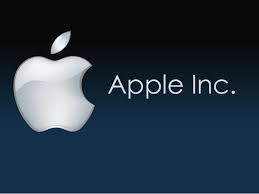This detailed report covers Apple’s environmental initiatives and experiences through the 2019 fiscal year, i.e., September 2019. It covers Apple’s efforts to address climate change, the resources it uses, and the role that chemistry plays in the company’s environmental activities.
Regarding carbon emissions and climate change, the Company intends to achieve net zero by 2030. New and on-going initiatives include:
- Low carbon design, e.g., using low carbon materials such as smelting aluminum via hydroelectricity rather than fossil fuels
- Energy efficiency, e.g., software and power-efficient components that intelligently manage power consumption.
- Renewable electricity, e.g., deploying evaporative cooling, airside economizers, and sophisticated cooling systems that optimize the sensitive temperature conditions at data centers
- Direct emissions abatement, e.g., the Company’s Supplier Energy Efficiency Program that educates suppliers on the importance of energy use reduction and supports projects to bring about change in that direction
- Renewable energy: Around 83 percent of the renewable energy Apple sources comes from projects that Apple created, for a total of 1.2 gigawatts operational and another 350 megawatts under contract.
- Carbon removal: approximately 779,000 annualized metric tons of carbon emissions were avoided in 2019
- The China Clean Energy Fund initiated in 2015 and presently funded at over $315M
- Direct emissions abatement, e.g., customer support being provided by technicians working from home
Resource usage is being addressed by:
- Materials management, e.g., iPhone 11, iPhone 11 Pro, and iPhone 11 Pro Max were each launched with 100 percent recycled rare earth elements in the Taptic Engine.
- Water stewardship, e.g., reducing the amount of water we needed to store to clean and refill the system by separating the pipes containing recirculating water with those that contain water for evaporation
- Zero waste to landfills, e.g., by amending construction contracts, for example, to include waste reporting and diversion requirements.
The Company focuses on implementing smarter chemistry through:
- Mapping and engagement, e.g., by cataloging the materials in tens of thousands of parts in our products and transmitting that information throughout the manufacturing supply chain and recycling activities
- Assessment, e.g., the Restricted Chemicals for Wearables (RCW) specification focuses on potentially harmful substances in wearable devices
- Innovation, e.g., spending four years to create an alternative to PVC and phthalates, which are used in the manufacture of power cords and headphone cables
Additionally, Apple has invested asserts that its “$100 million Racial Equity and Justice Initiative to expand opportunities for Black and Brown people in the areas of education, economic equality, and criminal justice reform,” including “the Impact Accelerator for minority-owned businesses—so that our investments in renewable energy or carbon capture can help fight systemic barriers in our economy.”
A 30 page appendix details further specifics regarding Apple’s environmental record and aspirations.
Note: Many corporations issue sustainability reports. Apple’s is notable for the extensiveness and specificity of its presentation. Bloomberg News, for example, compared Apple’s internal appraisal to that of other Big Tech companies like Microsoft and found Apple’s to be much more powerful.




